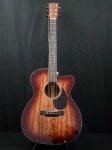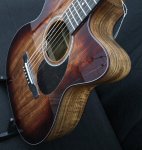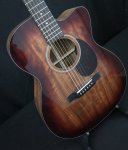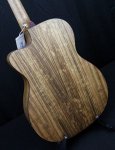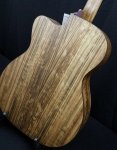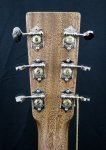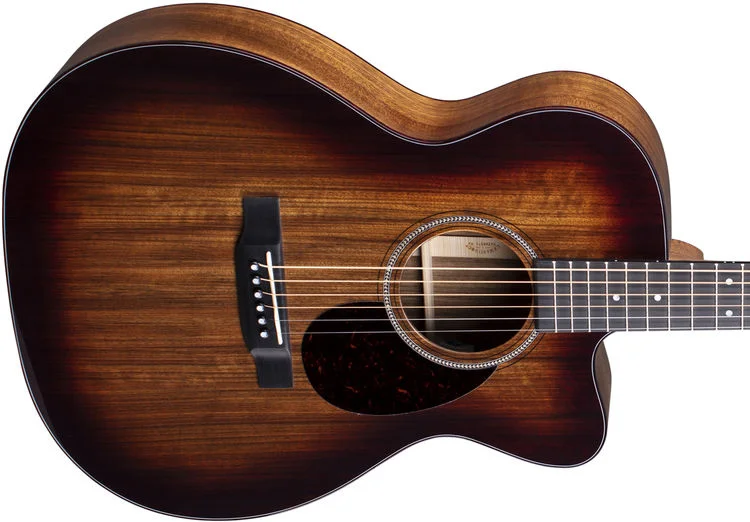Martin OMC-16E Features:
- Ovangkol top, back, and sides; satin finish
- Scalloped Sitka spruce X bracing
- Bold Herringbone with Multi-Stripe rosette
- Antique White binding, Red Faux Tortoise pickguard
- Select hardwood neck, Modified Low Oval with High Performance Taper profile; satin finish
- Ebony fingerboard, 16" radius, MOP Style 28 inlays
- 25.4" scale length, 20 frets
- Plek'd frets for optimized playability
- Fishman Matrix VT Enhance NT1 electronics
- Ebony bridge, 2-5/32" string spacing
- Compensated White Tusq saddle with Black Tusq pins
- 1.75" bone nut
- Nickel open-gear tuners
- Dual-action truss rod, soundhole access


